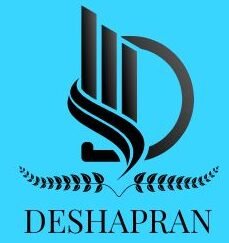Collecting rare coins is not just a hobby but a journey of discovery and hidden treasures. One such example is the 1976 Bicentennial Quarter. This special edition American coinage was minted to celebrate the 200th anniversary of the United States. While most of these quarters have a face value, a few rare varieties have fetched astronomical prices, including one that recently sold for a jaw-dropping $10 million. What makes these quarters so valuable? Let’s take a closer look at their unique features and why collectors are willing to pay a fortune for them.
Bicentennial Quarter Hits $20M+ Value – Discover Other Coins Worth $30M+!

1. The $10 Million Bicentennial Quarter
The rarest of them all is a Bicentennial Quarter that just sold for a whopping $10 million. It features a drummer boy on the reverse and George Washington on the obverse; it was the first coin issued to commemorate America’s bicentennial. It is 40% silver, and it’s in mint condition. Most Bicentennial Quarters are composed of a copper-nickel alloy, but this scarcity in silver alone, along with perfect preservation, makes it a true gem of collectibility.
2. Double Die Obverse-A Unique Mistake Worth Thousands
Another highly sought-after variant is the Double Die Obverse Bicentennial Quarter. This error occurs when the coin’s design is stamped twice, giving it a layered or shadowed effect. The mistake is especially noticeable on the lettering and date.
Collected: Such rare mistakes are treasured by collectors. An uncirculated Double Die Bicentennial Quarter can bring up to $150,000 at auction when bought in the right condition. The clearer the double effect, the more valuable is the coin.
3. Off-Center Strike_ Beauty in Imperfection
The Off-Center Strike Bicentennial Quarters is another interesting rarity. The production of these coins occurs when the blank planchet is not properly positioned in a striking press, leading to an off-center strike on the design.
The misalignment of the coin is also a critical factor in determining its value. Extremely off-center struck coins with visible dates can be sold for more than $200,000. Their unique and imperfect appearance makes them highly sought after by collectors.
4. Overstruck Quarter: A Rare Minting Anomaly
Even rarer is the Overstruck Bicentennial Quarter. In this error, a quarter mistakenly strikes over already minted coins, like dimes. Because of their overlapping designs, these coins are truly one of a kind.
Depending on how well both coin designs are preserved, an overstruck Bicentennial Quarter can sell for over $250,000. These intriguing errors give us a glimpse into the minting process and make for prized collector’s items.
$201K Bicentennial Quarter & 6 Other Valuable Coins You Should Look For!
$201K Bicentennial Quarter & 6 Other Valuable Coins You Should Look For!
5. Silver Proof Bicentennial Quarter_ The Magic of Silver Shine

Unlike other Bicentennial Quarters, Silver Proof varieties were specifically struck for collectors. These coins have 40% silver and carry a brilliant, mirror-like luster.
Though not technically error coins, the mint state, uncirculated Silver Proof Bicentennial Quarters have sold for upwards of $150,000. Their highly polished appearance, plus their small mintage, have made these pieces a Holy Grail among serious numismatists.
6. Full Drum Lines_ the Unsung Heroes, Little Things that Make Big Deals
One of the most diminutive yet precious things about a rare Bicentennial Quarter is its full detailing of drum lines on the drummer boy’s drum. Mostly, these lines are faint or incomplete due to worn dies in the minting process.
However, an unsampled coin with sharp clear drum lines costs well over $175,000. Fine details make quarters stand out in any collection.
7. No S Proof Quarter_ An Epitome of Rarity
No S Proof is one of the rarest Bicentennial Quarters. In general, proof coins issued in San Francisco carry an “S” mintmark. It so happened that some proof quarters were issued without it by mistake.
Since these quarters were not meant to be released in their current form, they are extremely rare. A No S Proof Bicentennial Quarter in excellent condition can fetch more than $200,000 at an auction.
Conclusion
These rare Bicentennial Quarters give one an exciting insight into American history, not to mention the collector value they have. Perhaps because of minting mistakes, special composition, or because they have survived the ages, these coins are far more valuable than their face value. Perhaps you are one of the lucky collectors holding a 1976 Bicentennial Quarter in your collection-or perhaps in your pocket change you may be surprised to learn what this could mean.
Coin collecting is not just about the monetary value of the coins but also about the preservation of history and cherishing the art behind each coin. Keep an eye on your change-you never know when you might stumble upon a fortune!
FAQs
1. Why is the 1976 Bicentennial Quarter so valuable?
The 1976 Bicentennial Quarter is valuable because of its rarity, minting errors, and historical significance. Certain versions of the coin, such as those with a unique minting error or made of special materials, can be worth millions.
2. How can I tell if my Bicentennial Quarter is valuable?
Check for key factors such as mint marks, rare errors, and whether the coin was struck in silver. Coins graded in pristine condition by professional grading services can also fetch high values.
3. Where can I sell a rare Bicentennial Quarter?
You can sell rare quarters at coin auctions, through professional coin dealers, or on online marketplaces specializing in collectibles, such as Heritage Auctions or eBay.
4. Are all 1976 Bicentennial Quarters valuable?
No, most Bicentennial Quarters are common and only worth their face value. However, rare versions with specific errors or high silver content can be worth significant amounts.
5. How do I get my Bicentennial Quarter appraised?
You can get your coin appraised by professional grading services like PCGS (Professional Coin Grading Service) or NGC (Numismatic Guaranty Corporation) to determine its authenticity and value.



